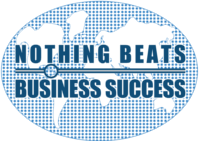“And no one pours new wine into old wineskins. If he does, the wine will burst the skins, the wine will run out and the wineskins will be ruined” – Luke 5:37
“Who Moved My Cheese? An Amazing Way to Deal with Change in Your Work and in Your Life”, published in 1998, is a motivational book by Spencer Johnson written in the style of a parable or business fable. It describes change, in one’s work and life, and four typical reactions to said change by two mice and two “little people” during their hunt for cheese. We must embrace change.
One of the observations in this book is “when you move beyond your fear, you feel free”. Fear, guilt, worry and anger are negative emotions which may inhibit our progress in life, we need to sensibly manage them whenever they emerge so that we can minimise the negative impact on our forward thrust. Instead, we must focus on positive belief systems such as self confidence, ambition, emotional security and good relationships. In particular, let us move beyond our fear and feel free. Let us focus on success.
In last week’s column, the topic was “Life Cycles”. We observed that the theory of life cycles may refer to humans, products, businesses or economies and we focused on the human life cycle. Today we discuss the business life cycle. What does this mean? A growing economy is the result of one successful business after another. These successful businesses must take into account the life cycles of the products and services offered for sale.
In the case of the human being as long as you can support the body to ensure that it continues breathing, then that determines life. The human being is determined to be dead on taking his/her last breath. “The days of our years are threescore years and ten; and if by reason of strength they be fourscore years, yet is their strength labour and sorrow; for it is soon cut off, and we fly away” (Psalm 90:10). Due to advances in the field of medicine there have been increases to the length of the average life span. Today, a super-centenarian is someone who has reached the age of 110 years. This age is achieved by about one in a thousand centenarians.
Businesses themselves have life cycles and will die in the process of time just like the human being. However, as long as you can support the business to ensure that it continues to have a strong triple bottom line (people, planet and profit or the three pillars) then the business will remain alive much longer than the human being. People – Management and Staff must be happy in terms of conditions of service and remuneration; Planet – we must engage in sustainable environmental practices otherwise there will be no where to conduct the business; Profit – the business must be sufficiently profitable to provide an acceptable return on investment for the shareholders. There is no super-centenarian concept in the context of the maximum life of a business; it may literally go on forever.
Whereas for human beings the global infant mortality rate (the number of deaths of infants under one year old per 1,000 live births) is just under 50 (or 5%), recent figures for business failure rates indicate that 20-30% of start-up businesses fail in the first year. Once the human being survives the first year then the mortality rate decreases significantly in the next four years, whereas for start-up businesses the mortality rate may increase to 90% by year five. I am not aware of any biblical reference related to the life expectation of a business but I can certainly attest to the text that no one pours new wine into old wine skins with impunity.
We have established that on the one hand the business life cycle can be intrinsically much longer than that of the human being but on the other hand the increasing failure rate is the real problem. How can we address this? Well, of course the answer is the CBET Shepherding Model™ which has been tested over the last three years.
The results from the project have revealed that there is no constraint in the context of Barbados, to find business ideas with the “DNA of an Elephant” since, in addition to the 12 considered, there were over 70 others which could not be considered because of the lack of resources required over the project period.
Based on the feedback from the Shepherds that were assigned to each project and the Enterprises themselves, there is absolutely no doubt, qualitatively, that the hypothesis that “shepherding mitigates the risk of business failure” was upheld. A quantitative estimate of the reduction of the failure rate will be determined in time.
The major constraint arising from the project is the continuing difficulty to access seed/venture capital funds from the available financial markets. The next phase of the Barbados project will, therefore, be to focus on targeting specific institutions to set up individual funds which would be managed by the CBET (Barbados) Fund management company under a franchising arrangement.
The good news is that another tool has been developed the Management of Business Matrix™ which is a gap analysis and planning tool to expedite the shepherding process. The fourth one day “Matrix” workshop will be held on Tues 24 April – book now call 231 9770.
